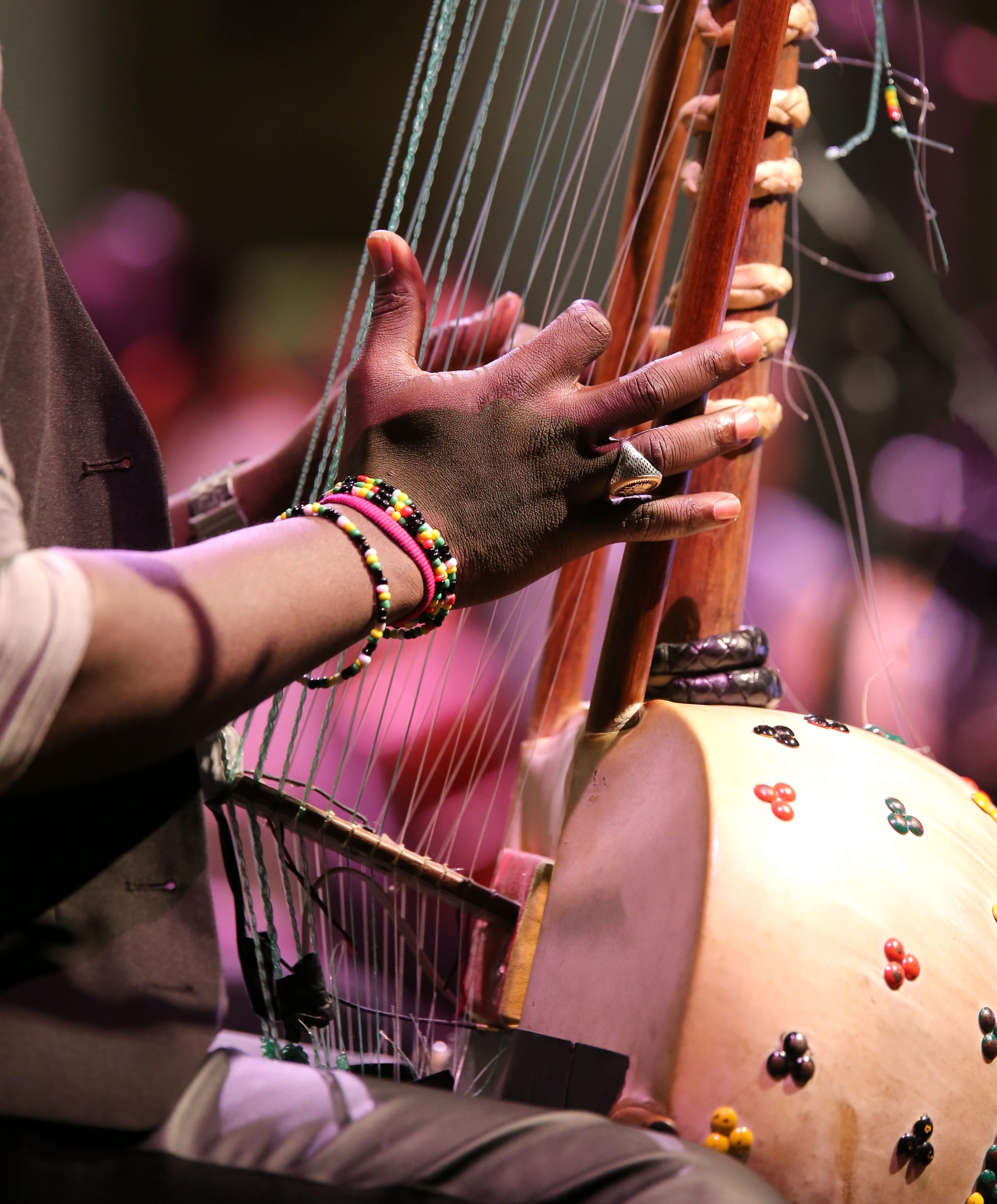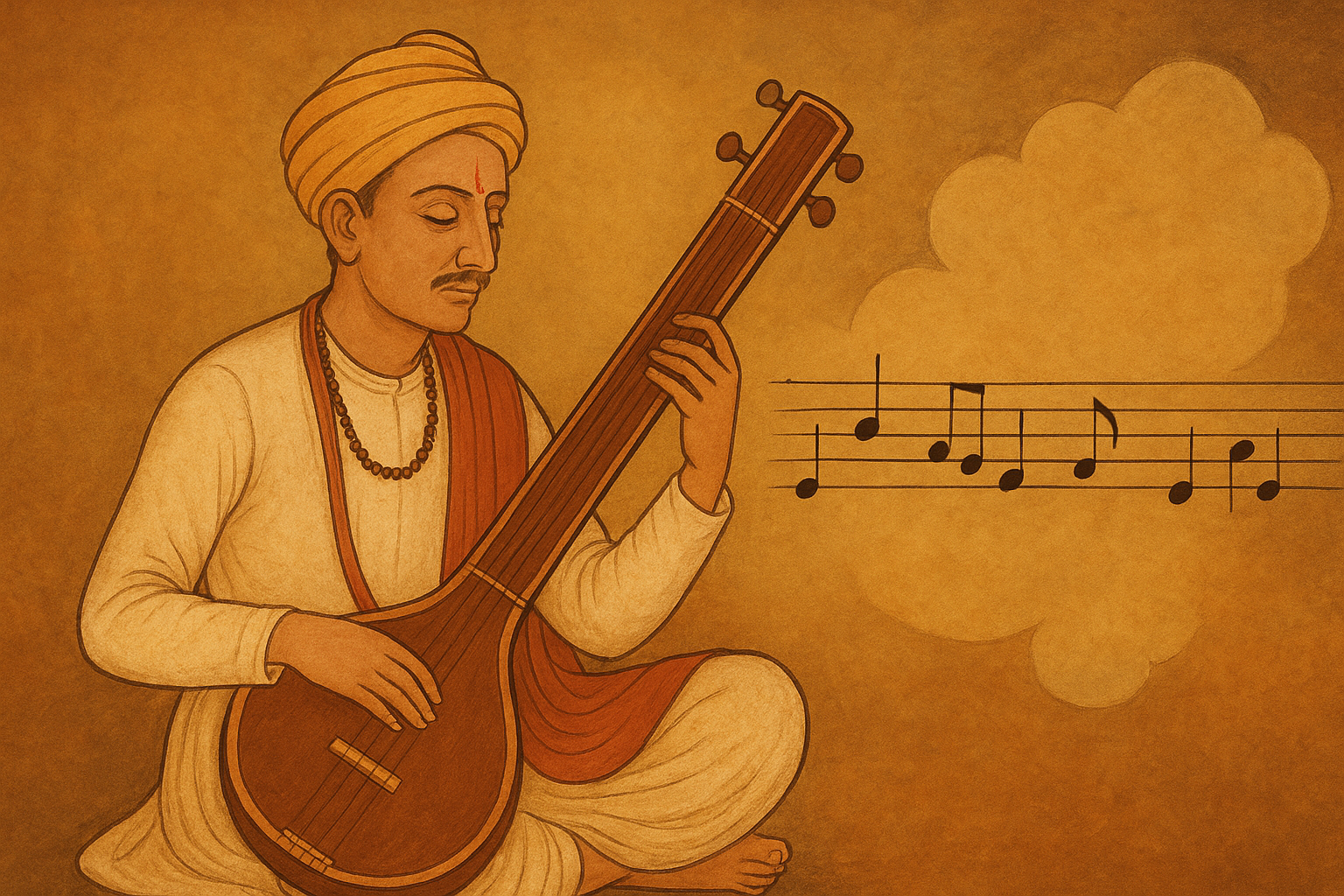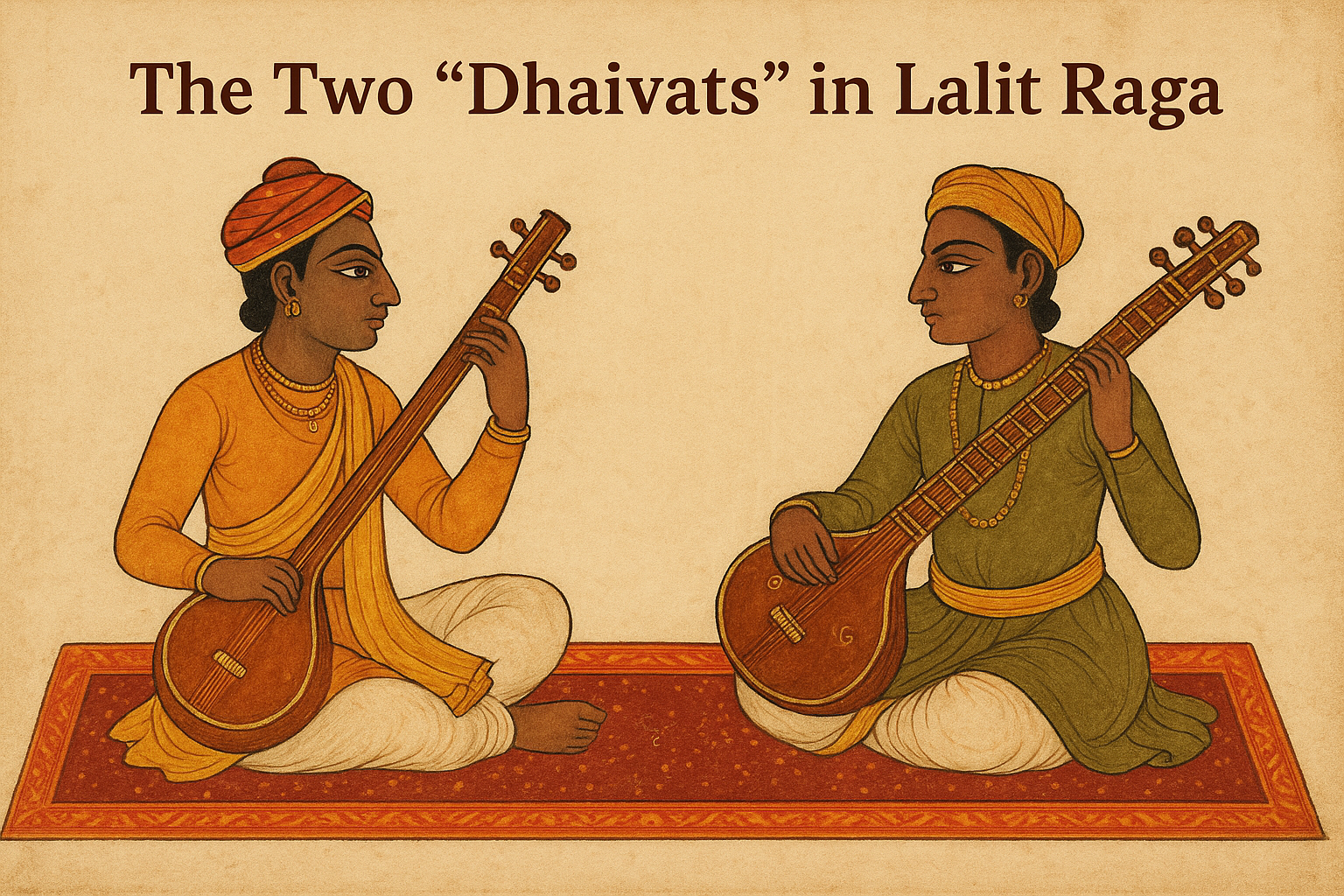In Part 1, we explored the expressive depth of Carnatic music through its various melodic forms. Now in Part 2, we turn our attention to the heart of rhythm: the Tala system. Talas are not just timekeepers—they are the pulse, discipline, and canvas upon which compositions are structured.
🪘 What is Tala in Carnatic Music?
In Carnatic music, Tala refers to the rhythmic cycle that governs a composition. While North Indian (Hindustani) music recognizes a vast range of talas, Carnatic music uses a more structured and mathematical approach, centering around 7 core talas, which are then expanded through rhythmic permutations called jatis.
🧮 The Core Tala System: 7 Primary Talas × 5 Jatis = 35 Talas
There are 7 main talas, and each can be rendered in 5 jatis, resulting in a total of 35 talas. Historically, texts mentioned 108 talas, but in modern practice, the focus has narrowed to these foundational patterns.
The 7 Basic Talas:
- Dhruva
- Matya
- Rupaka
- Jhampa
- Triputa
- Ata
- Eka
Each tala has different sections (angas) made up of rhythm units like laghu, dhrutam, and anudhrutam.
📏 Jatis – The Subdivisions of Laghu
The laghu unit varies in length based on the jati (subdivision). Here’s how the 5 jatis define the number of beats in a laghu:
Jati | Beats in Laghu |
Chatusra | 4 |
Tisra | 3 |
Khanda | 5 |
Misra | 7 |
Sankirna | 9 |
By combining these jatis with the 7 talas, we get 35 unique talas. For example, Dhruva tala in Tisra jati becomes a tala of 11 beats: 3 + 2 + 3 + 3 = 11.
🔢 Symbols Used in Tala Notation
Carnatic talas use specific symbols to represent the rhythm units:
Symbol | Meaning | Beats |
Anudhrutam | 1 | |
Dhrutam | 2 | |
Laghu (4 beats, default) | 4 |
Extended symbols like guru (8 beats), pluta (12 beats), and kakapada (16 beats) exist in older texts but are rarely used in contemporary compositions.
🎼 Example – Chatusra Jati Talas and Their Structures:
Tala Name | Sections | Symbolic Pattern | Total Beats |
Dhruva | 4 |
| 4+2+4+4 = 14 |
Matya | 3 | 4+2+4 = 10 | |
Rupaka | 2 | 4+2 = 6 | |
Jhampa | 3 | 4+1+2 = 7 | |
Triputa | 3 | 4+2+2 = 8 | |
Ata | 4 |
| 4+4+2+2 = 12 |
Eka | 1 | 4 |
These examples use chatusra jati (4-beat laghus). Changing the jati changes the tala length.
🎵 Unique Features of the Carnatic Tala System
- Clap on the First Beat of Every Section
Unlike Hindustani music, where some sections are silent, every section in Carnatic tala begins with a clap. - Vinyasa of Other Beats – Visarjitam
Beats beyond the first are indicated through hand gestures:- Pataka Visarjitam – Raising the hand
- Krusya – Moving the hand to the left
- Sarpini – Moving the hand to the right
- Pataka Visarjitam – Raising the hand
- Special Rules for Anudhrutam and Dhrutam
- Anudhrutam (1 beat) has no visarjitam.
- Dhrutam (2 beats) has a clap on the first and visarjitam on the second.
- Anudhrutam (1 beat) has no visarjitam.
- Laghus Vary Based on Jati
Clap on the first beat, and perform visarjitam on the rest according to the number of beats in that jati. - Number of Symbols = Number of Sections
Each tala’s structure is reflected in its notation symbols. - All Talas Start on the Samam (Downbeat)
Every tala cycle begins on a clearly marked first beat. - Simplified Notation for Jati
Instead of writing “Tisra Jati Dhruva Tala”, Carnatic notation may simply indicate the laghu count:
Example: |3| o |3| 3| for a Tisra Jati Dhruva Tala. - Unlike Hindustani Talas, Carnatic Talas Don’t Have Fixed Bols
Carnatic music focuses on structure, not bol patterns. This allows performers to use hand gestures for keeping time without specific syllables.
🧾 Writing Talas in Carnatic Notation
When adapting talas from Hindustani to Carnatic format, certain changes are made:
- If a section contains a silent beat (kaal), it is combined with the previous section.
- To maintain the original rhythmic structure, a “+” sign is used to indicate this change, without reducing the number of sections.
For example, Hindustani Jhaptal: 2 + 3 + 2 + 3
→ may be adapted in Carnatic as: 2 + (3+2) + 3
→ ensuring three sections and consistent tala identity.
🎶 Why This Matters
Understanding tala is vital for any Carnatic music student or performer. While raga gives us melody and mood, tala gives shape, structure, and discipline to a composition. Every composition—be it a Varnam, Kriti, or Tillana—draws power from rhythmic mastery.
At Sur Sanskaar Academy of Music, we guide students to internalize these rhythms, not just count them. When tala becomes second nature, music truly flows.
🌿 Want to dive deeper into Raga-Tala improvisation or join our performance workshops?
Reach out to us ➝
Stay tuned for the next part where we explore rhythmic improvisations and their role in concerts!


